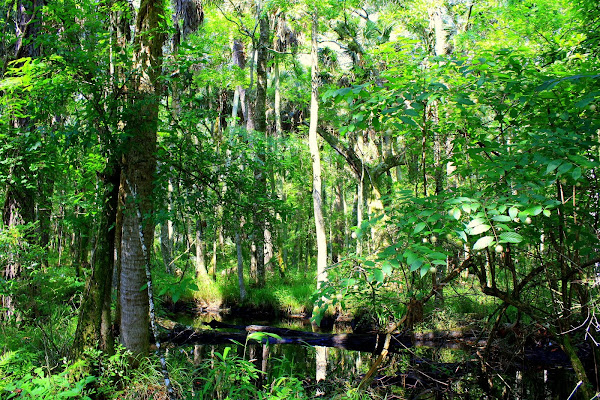 A book for the nature lover, researcher,
bicyclist, and hiker – anyone who traverses the Florida landscape and pauses to
say – what’s that plant?
A book for the nature lover, researcher,
bicyclist, and hiker – anyone who traverses the Florida landscape and pauses to
say – what’s that plant?
Walter Kingsley Taylor, professor emeritus of
biology at the University of Central Florida, has traipsed all over Florida
gathering information for Florida
Wildflowers. Taylor is also author of A
Guide to Florida Grasses.
Florida
Wildflowers sorts plants into regions such as hardwood-forested uplands,
pine flatwoods, wetlands, and more, covering the entire state of Florida, and
making each search to identify plants a joy. It’s easy. Plants are photographed
in their natural state. Books that have line drawings of plants tend to all
look the same to me. This is not an issue in Taylor’s book. The author does not
stop at wildflowers – but photographs and writes about trees, shrubs, and
pretty much anything that grows. If you are out on the trail biking or hiking
and spot a plant, I’m betting that it will be in Taylor’s book. Thus far, I’ve
found data on each bit of greenery that I wanted information on.
As a writer of fiction that takes place in
Florida, I want to have the correct plant in the right place, whether it is growing
in sand, loam, red clay, rich black earth, or bogs. As Taylor demonstrates,
Florida sits at a latitude where the major deserts of our Earth occur—yet our
state is known for green luxurious growth. The humidity gifted to our state by
the Gulf Stream helps create this atmosphere and moderates temperatures that
otherwise would indeed reflect the deserts of Africa and Mexico, to name only
two. In Florida, you are no more than 100 miles from the salt water at any
point.
With Florida
Wildflowers, you don’t only get identification of species – both the Latin
and common names, you have the opportunity to learn more of this Sunshine
State. Did you know that Ocala limestone of the Eocene period (65 million years
ago) makes up the major formation of the entire state? Well, maybe you knew, but I didn’t, and I find
learning about my state through Taylor’s eyes is fun as well as enlightening.
Did you know that the hills that slope away from
Tallahassee, the Florida Capital, used to be the coastline of Florida at one
time? Anyone visiting the Capitol (if this were still the coastline) could see
water lapping away just below FAMU, (Florida Agricultural and Mechanical
University.) The soil, and therefore plant life, changes, as you travel from
North Florida on down to the coast. Are you curious to know what type of grass
is under your toes? Worried about that sticker in your ankle? Florida Wildflowers is the book for
you.
In Florida
Wildflowers, you learn that some plants have “people” names, such as Joewood,
Walter’s Groundcherry, and Godfrey’s False Dragonhead. Makes me wonder what
these and other individuals did, to have plants named after them.
 While Taylor does give information on whether some
plants are edible or not, I do find myself asking that question on all Florida
flora in his book. Maybe the next version will have this, because Taylor does
believe in improving his books. Florida
Wildflowers is a second edition. For those interested in knowing if certain
plants in Florida are endemic, endangered, or threatened, this is information
was added when Taylor revised and updated his glorious book on wildflowers. In
this new edition, Taylor also added hundreds of photographs, realigned his
first book to make it more user friendly, and to reflect current terrestrial
communities and the plants growing in them.
While Taylor does give information on whether some
plants are edible or not, I do find myself asking that question on all Florida
flora in his book. Maybe the next version will have this, because Taylor does
believe in improving his books. Florida
Wildflowers is a second edition. For those interested in knowing if certain
plants in Florida are endemic, endangered, or threatened, this is information
was added when Taylor revised and updated his glorious book on wildflowers. In
this new edition, Taylor also added hundreds of photographs, realigned his
first book to make it more user friendly, and to reflect current terrestrial
communities and the plants growing in them.
My copy of this book is not in too good a shape
– I keep it in my vehicle in case I want to look up a bit of greenery that has
garnered my attention. I use it when writing and need to know if a particular
plant is flowering or has berries. Taylor’s book should be on everyone’s
bookshelf, tucked in a backpack, or nestled in a kayak. You can’t go wrong
having Florida Wildflowers handy.
After all, how else could you answer the
question: what’s that plant?
Florida
Wildflowers – A Comprehensive Guide is available from your favorite on-line
dealer, through University Press, and in bookstores near you.





















